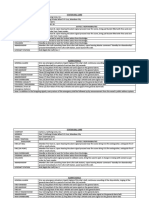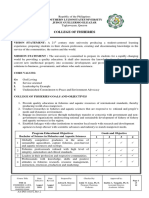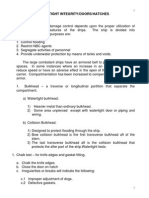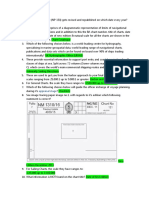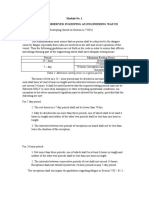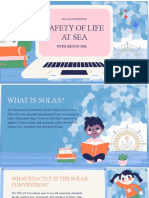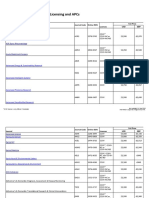100%(1)100% found this document useful (1 vote)
686 viewsPrevention of Alcohol and Drug Abuse in The Maritime Sector (PADAMS)
Prevention of Alcohol and Drug Abuse in The Maritime Sector (PADAMS)
Uploaded by
Cezar M. Barranta Jr.This document provides information about alcohol, including its types, common alcoholic beverages, and alcoholism. It defines alcohol and lists various types like methyl, ethyl, isopropyl, and others. Common beverages described are wines, beer, whisky, rum, brandy, gin and liquors. Local brews like arrack and toddy from Southeast Asia are also mentioned. The document discusses alcoholism and the increasing problems of alcohol and drug abuse.
Copyright:
© All Rights Reserved
Available Formats
Download as PPTX, PDF, TXT or read online from Scribd
Prevention of Alcohol and Drug Abuse in The Maritime Sector (PADAMS)
Prevention of Alcohol and Drug Abuse in The Maritime Sector (PADAMS)
Uploaded by
Cezar M. Barranta Jr.100%(1)100% found this document useful (1 vote)
686 views16 pagesThis document provides information about alcohol, including its types, common alcoholic beverages, and alcoholism. It defines alcohol and lists various types like methyl, ethyl, isopropyl, and others. Common beverages described are wines, beer, whisky, rum, brandy, gin and liquors. Local brews like arrack and toddy from Southeast Asia are also mentioned. The document discusses alcoholism and the increasing problems of alcohol and drug abuse.
Original Title
PADAMS
Copyright
© © All Rights Reserved
Available Formats
PPTX, PDF, TXT or read online from Scribd
Share this document
Did you find this document useful?
Is this content inappropriate?
This document provides information about alcohol, including its types, common alcoholic beverages, and alcoholism. It defines alcohol and lists various types like methyl, ethyl, isopropyl, and others. Common beverages described are wines, beer, whisky, rum, brandy, gin and liquors. Local brews like arrack and toddy from Southeast Asia are also mentioned. The document discusses alcoholism and the increasing problems of alcohol and drug abuse.
Copyright:
© All Rights Reserved
Available Formats
Download as PPTX, PDF, TXT or read online from Scribd
Download as pptx, pdf, or txt
100%(1)100% found this document useful (1 vote)
686 views16 pagesPrevention of Alcohol and Drug Abuse in The Maritime Sector (PADAMS)
Prevention of Alcohol and Drug Abuse in The Maritime Sector (PADAMS)
Uploaded by
Cezar M. Barranta Jr.This document provides information about alcohol, including its types, common alcoholic beverages, and alcoholism. It defines alcohol and lists various types like methyl, ethyl, isopropyl, and others. Common beverages described are wines, beer, whisky, rum, brandy, gin and liquors. Local brews like arrack and toddy from Southeast Asia are also mentioned. The document discusses alcoholism and the increasing problems of alcohol and drug abuse.
Copyright:
© All Rights Reserved
Available Formats
Download as PPTX, PDF, TXT or read online from Scribd
Download as pptx, pdf, or txt
You are on page 1of 16
Prevention of Alcohol and
Drug Abuse in the Maritime
Sector (PADAMS)
Objectives
• What is Alcohol?
• Alcohol use and abuse and the consequences
• What are drugs?
• Drug use and abuse and the consequences
• The danger and consequences of drug trafficking
What is Alcohol?
• Alcoholic drinks have been prepared and drunk for thousands of years, and
the problems that can accompany excess alcohol intake have undoubtedly
been around just as long.
• Alcohol (Arabic al-kuhul), term applied to members of a group of chemical
compounds and, in popular usage, to the specific compound ethyl alcohol or
ethanol.
• The Arabic word demotes kohl,a fine powder of antimony used as an eye
makeup.
• The word alcohol originally denoted any fine powder; the alchemist of
medieval Europe later applied it to essences obtained by distillation, and this
led to the current page.
Types of Alcohol
Methyl (wood By destructive distillation of wood. Also by Solvent for fats, oils resins, nitrocellulose.
alcohol, methanol) synthesis from hydrogen and carbon Manufacture for dyes, formaldehyde, antifreeze
monoxide under high pressure. solution, special fuels, plastics
Ethyl (grain alcohol, By fermentation of sugar, starch, or waste Solvent for products such as lacquers, paints,
ethanol) sulfite liquor. Synthesis from ethylene or varnishes, glues, pharmaceuticals, explosives.
acetylene. Direct hydration of ethtlene. Also as “building block” in making high-
molecular-weight materials.
Isopropyl By hydration of propylene from cracked Solvent for oils, gums, alkaloids, resins. Making
(isopropanol) gases. Also as by-product of certain acetone, soap, antiseptic solutions.
fermentation processes.
Normal propyl As a coproduct of air oxidation of propane Solvent for laquers, resins, coatings, films, waxes.
and butane mixtures. Also as brake fluid, in manufacture of propionic
acid, plasticizers.
Butyl (n-butanol) By fermentation of starch or sugar. Also by Solvent for nitrocellulose, ethyl cellulose, lacquer,
synthesis, using ethyl alcohol or acetylene. urea-formaldehyde, urea-melamine plastics.
Diluent of hydraulic fluids, extractant of drugs.
Types of Alcohol
Isobutyl By synthesis from carbon monoxide and Solvent for castor-oil-base brake fluids. Substitute
hydrogen at high pressure, then distillation for n-butyl alcohol in making urea resins.
from products formed.
Secondary butyl By hydration of 1—butane, formed in In making other chemicals such as methyl ethyl
petroleum cracking. ketone. Solvent in nitrocellulose lacquers.
Production of brake fluids, special greases.
Tertiary butyl By hydration of isobutylene, derived from In perfume making. As wetting agent in
petroleum cracking. detergents. Solvent for drugs and cleaning
compounds.
Amyl (pentyl) By fractional distillation of fuel oil, o Solvent for many natural and synthetic resins.
coproduct of ethyl alcohol manufacture by Diluting brakes fluids, printing inks, lacquers. In
fermentation medicinal products.
Ethylene Glycol By oxidation of ethylene to glycol. Also by Deicing fluid, anti-freeze, brake fluid. In
hydrogenation of methyl glycolate made from production of explosives. Solvent for stains, oils,
formaldehyde and methanol. resins, enamels, inks, dyes.
Types of Alcohol
Diethylene Glycol As product in manufacture of ethylene glycol Solvent for dyes resins. Antileak agent in adhesive
printing inks.
Triethylene glycol Coproduct in manufacture of ethylene glycol Air disinfectant and dehumidifier. Production of
resins, plasticizers.
Glycerol (glycerin; 1- From treatment of fats in soapmaking. In alkyd resins, explosives, cellophane. Tobacco
2-3-propanetriol) Synthetically, from propylene. By humectant.
fermentation.
Penthaerythritol By condensation of acetaldehyde and In synthetic resins, as tetranitrate in explosives.
formaldehyde Also as drug for treatment of heart disease.
Sorbitol By reduction of sugar, usually corn sugar, with In foods, pharmaceuticals, in chemical
hydrogen. manufacture. Conditioning agent in paper,
textiles, glue, cosmetics. Source of alcohol in
resin manufacture.
Cyclohexanol By catalytic, hydrogenation of phenol. By Intermediate in making chemicals used in nylon
catalytic, air oxidation of cyclohexane. manufacture. Stabilizer and homogenizer of
soaps, synthetic detergents. Solvent.
Friend or Foe
• High levels of alcohol consumption can lead to physical illness and
psychological and social distress.
• Small, regular amounts of alcohol also seem to have a positive effect
on the heart and circulation.
• But too much alcohol is often a recipe for disaster.
The increasing use of alcohol, along with other drugs of abuse, is a
serious public health problem across all age ranges, but so in the
young.
Brief Description of Alcoholic Beverages
• Wines – are made from a variety of fruits, such as grapes, peaches,
plums or apricot. The most common wines are produced from grapes.
The soil in which the grapes are grown and the weather conditions in
the growing season determine the quality of wines. When ripe, the
grapes are crushed and fermented in large vats to produce wine.
• Beer – is also made by the process of fermentation. A liquid mix, called
wort, is prepared by combining yeast and malted cereal, such as com,
rye, wheat or barley. Fermentation of this liquid mix produces alcohol
and carbon dioxide . The process of fermentation is stopped before it is
completed to limit the alcohol content. The alcohol so produced is
called beer. It contains 4 to 8 percent of alcohol.
Brief Description of Alcoholic Beverages
• Whisky – is made by distilling the fermented juice of cereal grain such
as corn, rye or barley. Scotch whisky was originally made in Scotland.
The word “Scotch” has become almost synchronous with whisky of
good quality.
• Rum – is a distilled beverage made from fermented molasses or
sugarcane juice.
• Brandy – is distilled from fermented fruit juices. Brandy is usually aged
in oak casks. The colour of brandy comes from either the casks or
from caramel that is added.
Brief Description of Alcoholic Beverages
• Gin – is a distilled beverage. It is a combination of alcohol, water and
various flavors. Gin does not improve with age, so it is not stored in
wooden casks.
• Liquors – are made by adding sugar and flavouring such as fruits, herb
or flowers to brandy or to a combination of alcohol and water. Most
liquers contain 20-65 percent alcohol. They are usually consumed in
small quantities after dinner.
Types of Alcoholic Beverages
Beverage Source Alcohol Content (percentage)
Brandy Fruit Juices 40-50
Whisky Cereal Grains 40 -55
Rum Molasses/sugarcane 40-55
Wines (Port, Sherry, Champagne, Grapes (also other fruits) 10-22
etc)
Beer Cereals 4-8
Common Local Brew in the South-East Asia
Region
• Arrack is a distilled beverage, obtained from paddy or wheat. Jaggery,
sugar, or sugarcane is added to either of these two cereals and boiled
with water. This is allowed to ferment, after which it is distilled. This
beverage contains about 50-60 percent of alcohol.
• Toddy is obtained from the flowers of a coconut or palm tree. A white
liquid, with a sweetish taste, oozes out of these flowers. When
consumed fresh, this juice has no intoxicating effect. This liquid is
collected and allowed to ferment. At times, yeast is added to hasten
the process. The fermented juice has an alcohol content of
approximately 5-10 per cent.
Equivalence of Different Beverages
• The volume-by-volume strength of alcoholic beverages varies
considerably.
• The equivalence of different beverages is measured in terms of
“units” of alcohol.
• One unit is equal to approximately 10 grams of absolute alcohol, ofter
considered as one drink, since it is available from 30 ml (1 fluid ounce
or small peg) of spirits like whisky, rum or brand.
• The same amount of alcohol, one unit, is also available from a glass of
wine, which is generally 120 ml or half a pint or 285ml of beer.
Alcoholism (Dependence on Alcohol)
• Alcoholism, or alcohol dependence is a medical term with a deliberately
more precise. Meaning than the problems that can occur, sometimes as
one-offs, through an uncharacteristic bridge.
• In alcohol dependence a number of features come together in the
behavior of the person affected
• Drinking begins to take priority over other avtivities.
• It becomes a compulsion
• Tolerance develops, it takes more alcohol to produce drunkenness.
• Withdrawal symptoms such as anxiety and tremor develop after a short period
without a drink, and are reduced by taking more alcohol.
Often alcohol dependence remains undetected for years.
Sign of Alcoholism
• As alcohol levels increase with more drinking, there is poor control of muscles,
poor coordination, double vision, flushing of the face, bloodshot eyes, and
vomiting.
• Behavior varies greatly. It is hard to predict what an intoxicated person will do
next.
• He/she may cry bitterly, show unexplained happiness, change moods rapidly, or
just pass out.
Note: “Passing out” or “falling asleep” can be a warning sign that the person is
actually in a dangerous alcohol coma. Shipmates may assume the person is safely
asleep, when he/she may actually be in a life-threatening coma. Take care to
monitor a shipmate’s condition and make certain that he is breathing and
responsive. Get immediate help if you suspect
You might also like
- Create This Book Pages To Print - Google Search 2Document1 pageCreate This Book Pages To Print - Google Search 2karenhanysalipNo ratings yet
- Harrison Floyd's Opposition To Motion To Quash SubpoenasDocument80 pagesHarrison Floyd's Opposition To Motion To Quash Subpoenaskmoncla100% (3)
- Detailed Teaching Syllabus CHED MARINA (08NOV2021)Document47 pagesDetailed Teaching Syllabus CHED MARINA (08NOV2021)manuel tamondongNo ratings yet
- Prevention of Alcohol and Drug Abuse in Maritime SectorDocument54 pagesPrevention of Alcohol and Drug Abuse in Maritime SectorRolando Dumelod100% (4)
- SEAM 2 PPT Mod 1Document246 pagesSEAM 2 PPT Mod 1Ell Malabunga67% (3)
- Educational System in NigeriaDocument32 pagesEducational System in NigeriaCezar M. Barranta Jr.No ratings yet
- Padams PDFDocument248 pagesPadams PDFAltitude Maritime TrainingCenter0% (1)
- Group 6Document21 pagesGroup 6watashiwa anata100% (1)
- Marlaw (Review) : C. Chartering A ShipDocument4 pagesMarlaw (Review) : C. Chartering A ShipDarkxeiD100% (1)
- Kaiser International Health Group, Inc - DentistsDocument7 pagesKaiser International Health Group, Inc - DentistsCezar M. Barranta Jr.No ratings yet
- Special Pathology Solved KMU SEQs by RMC StudentsDocument145 pagesSpecial Pathology Solved KMU SEQs by RMC StudentsAamir Khan0% (1)
- PADAMS HandoutsDocument25 pagesPADAMS HandoutsLoreta Manaol Vinculado100% (2)
- Management 1Document4 pagesManagement 1Brendan Rezz R CilotNo ratings yet
- L.O. 4.5 PadamsDocument109 pagesL.O. 4.5 PadamsGRACE VERIDIANONo ratings yet
- GE6 BSE2D Caberoy Nhoricks 3Document4 pagesGE6 BSE2D Caberoy Nhoricks 3Nhoricks Lambatin CaberoyNo ratings yet
- Mar Env:: Protection of The Marine EnvironmentDocument9 pagesMar Env:: Protection of The Marine EnvironmentHaeisy SimsuangcoNo ratings yet
- Dr. Carlos S. Lanting College: College of Maritime Education Course Syllabus: Seam IvDocument21 pagesDr. Carlos S. Lanting College: College of Maritime Education Course Syllabus: Seam IvOrlando Dela CruzNo ratings yet
- ARTA Prelim ReviewerDocument10 pagesARTA Prelim ReviewerMj Nuarin100% (1)
- Case Study On The Capsizing of MS Herald of Free EnterpriseDocument4 pagesCase Study On The Capsizing of MS Herald of Free EnterpriseJose Albert MacayaNo ratings yet
- Station Bill CardDocument2 pagesStation Bill CardAntonio Jr Beloy Limosnero100% (1)
- MarCom 3Document148 pagesMarCom 3Renefrid Tejero67% (3)
- Q15 16 Helm OrdersDocument4 pagesQ15 16 Helm Ordersuyawakoko100% (1)
- Ship Ship Routine and ConstrutiosDocument9 pagesShip Ship Routine and ConstrutiosJj GonzalesNo ratings yet
- Basic Training: Elementary First Aid: Written AssessmentDocument2 pagesBasic Training: Elementary First Aid: Written AssessmentClark Llamera100% (1)
- FORM 5 - Ratings Forming Part of Navigational WatchDocument2 pagesFORM 5 - Ratings Forming Part of Navigational WatchRobert Agapito100% (1)
- Effectiveness IN Performing Laboratory Activities Among Marine Transportation IN University OF Cebu Lapu-Lapu AND MandaueDocument26 pagesEffectiveness IN Performing Laboratory Activities Among Marine Transportation IN University OF Cebu Lapu-Lapu AND MandaueRetarded EditsNo ratings yet
- Documents Required by The AnnexesDocument15 pagesDocuments Required by The Annexesjosh luiz baqldomarNo ratings yet
- Precolonial Science and Technology Semi Final Research Semi Final 3Document12 pagesPrecolonial Science and Technology Semi Final Research Semi Final 3Kend Darius A Qoute100% (1)
- Decks, Hatches, Superstructures, Shell Plating & Pillars - UpdatedDocument28 pagesDecks, Hatches, Superstructures, Shell Plating & Pillars - UpdatedASIT DAS100% (1)
- Badminton: Pe104: Physical Activities Towards Health - Fitness 2 Packet 1Document7 pagesBadminton: Pe104: Physical Activities Towards Health - Fitness 2 Packet 1Tosh ShibaNo ratings yet
- (Machl) : JCMMC 01, 2023 Annex C2Document48 pages(Machl) : JCMMC 01, 2023 Annex C2Jeynard Moler J. TanNo ratings yet
- Personnel ManagementDocument15 pagesPersonnel ManagementHarvey Zabala50% (2)
- SEAM 1 MODULE UpdatedDocument157 pagesSEAM 1 MODULE UpdatedWarren Fallorin MisaNo ratings yet
- Sewage Pollution PreventionDocument12 pagesSewage Pollution Preventionsabeer100% (2)
- FSH 12 - Fisheries Laws, Policies and InstitutionDocument14 pagesFSH 12 - Fisheries Laws, Policies and Institutionjofrenmoreno100% (1)
- Watertight IntegrityDocument3 pagesWatertight IntegrityJosua Sahat Parulian SinagaNo ratings yet
- 16 Seam 3Document253 pages16 Seam 3Nayrb Ros100% (2)
- Lesson 1 Philosophical PerspectivesDocument17 pagesLesson 1 Philosophical PerspectivesSherwin Castillejos100% (1)
- Group3 Cultural Awareness 1Document17 pagesGroup3 Cultural Awareness 1Justin CaliguiaNo ratings yet
- Rotc MS2 MidtermsDocument10 pagesRotc MS2 MidtermsAngelika Barte MulletaNo ratings yet
- Prevention of Alcohol and DrugsDocument3 pagesPrevention of Alcohol and DrugsJun AcostaNo ratings yet
- Part C - Course Syllabus MARPOLDocument3 pagesPart C - Course Syllabus MARPOLAltitude Maritime TrainingCenterNo ratings yet
- Factors Affecting Work Attitude of Filipino Seafarers in The Diverse Work Environment ManuscriptDocument72 pagesFactors Affecting Work Attitude of Filipino Seafarers in The Diverse Work Environment ManuscriptAmos BagaipoNo ratings yet
- Principles To Be Observed in Keeping A Radio Watch: By: Cabilao, Jan EmanuelleDocument5 pagesPrinciples To Be Observed in Keeping A Radio Watch: By: Cabilao, Jan EmanuelleJan Emanuelle Cabilao0% (1)
- Terrorism: Proliferation of Weapons of Mass DestructionDocument3 pagesTerrorism: Proliferation of Weapons of Mass DestructionCharlene CapinpinNo ratings yet
- Activities and Assessments:: ASSIGNMENT (SUBMIT Your Answers at EDMODO Assignment Section)Document5 pagesActivities and Assessments:: ASSIGNMENT (SUBMIT Your Answers at EDMODO Assignment Section)Quen CuestaNo ratings yet
- Flaghoist Signalling: The Home of Naval Reservists in The Southern LuzonDocument37 pagesFlaghoist Signalling: The Home of Naval Reservists in The Southern Luzonmrscode 002No ratings yet
- Bachelor of Science in Marine Engineering: The Problem and Its SettingDocument7 pagesBachelor of Science in Marine Engineering: The Problem and Its Settingmonica bianca pelescoNo ratings yet
- Nav 327 Prelim Exam ReviewerDocument7 pagesNav 327 Prelim Exam ReviewerKyle Steven Cayme100% (1)
- Responsibilities and Objective in MarpolDocument2 pagesResponsibilities and Objective in MarpolJohn Weak100% (2)
- COMPRE QZ1 PrelimDocument2 pagesCOMPRE QZ1 PrelimJULLIE CARMELLE H. CHATTONo ratings yet
- Course Package Part A: Course SpecificationDocument12 pagesCourse Package Part A: Course SpecificationGRACE VERIDIANO100% (1)
- Seam 4 QuizDocument2 pagesSeam 4 QuizHope Earl Ropia BoronganNo ratings yet
- Psych 101: Understanding The Self Instructor: Neil Bryan N. MoninioDocument8 pagesPsych 101: Understanding The Self Instructor: Neil Bryan N. MoninioNeil bryan MoninioNo ratings yet
- SCRIPTDocument2 pagesSCRIPTRobin Santol0% (1)
- Marine Communication EquipmentDocument18 pagesMarine Communication EquipmentMenly Susada100% (1)
- Parts of The Marine SextantDocument14 pagesParts of The Marine SextantJo Anthony CapalaranNo ratings yet
- Art Appreciation ReviewerDocument14 pagesArt Appreciation ReviewerRon RealinNo ratings yet
- Contextual Plane Evaluative PlaneDocument26 pagesContextual Plane Evaluative PlaneJames ClarkNo ratings yet
- Module RFPNWDocument59 pagesModule RFPNWKharl Ashley PastorNo ratings yet
- Occupational Health and Safety Including PadamsDocument27 pagesOccupational Health and Safety Including PadamsFerlyn SanorjoNo ratings yet
- Module No. 1 Principles To Be Observed in Keeping An Engineering WatchDocument9 pagesModule No. 1 Principles To Be Observed in Keeping An Engineering WatchAdrian Camasosa100% (1)
- Module Title: Overview of Environmental Management SystemsDocument10 pagesModule Title: Overview of Environmental Management SystemsRuby Ann MariñasNo ratings yet
- MARPOL 73/78 ResumeDocument6 pagesMARPOL 73/78 ResumeSandy NaufalNo ratings yet
- Ethanol: Done By: Shalenne Bahadur Subject: Chemistry Class: U6SDocument10 pagesEthanol: Done By: Shalenne Bahadur Subject: Chemistry Class: U6SVarune kingNo ratings yet
- Seam 5 - New TemplateDocument29 pagesSeam 5 - New TemplateCezar M. Barranta Jr.No ratings yet
- Elect 212 - New TemplateDocument23 pagesElect 212 - New TemplateCezar M. Barranta Jr.No ratings yet
- Img20220614 11235039Document1 pageImg20220614 11235039Cezar M. Barranta Jr.No ratings yet
- Mt-1st Year Revisedv2Document14 pagesMt-1st Year Revisedv2Cezar M. Barranta Jr.No ratings yet
- Marlaw Final ExamDocument13 pagesMarlaw Final ExamCezar M. Barranta Jr.No ratings yet
- SEAM 1 For DR OmarDocument20 pagesSEAM 1 For DR OmarCezar M. Barranta Jr.No ratings yet
- MARLAW 334 Topic 8-WEEK8Document44 pagesMARLAW 334 Topic 8-WEEK8Cezar M. Barranta Jr.No ratings yet
- Bridge Navigational Watch Alarm System Group 8Document13 pagesBridge Navigational Watch Alarm System Group 8Cezar M. Barranta Jr.No ratings yet
- MARLAW 334 Topic 9-WEEK9Document31 pagesMARLAW 334 Topic 9-WEEK9Cezar M. Barranta Jr.No ratings yet
- Echo Sounder Group 4Document14 pagesEcho Sounder Group 4Cezar M. Barranta Jr.No ratings yet
- DWATCH Reporting GRP 7Document11 pagesDWATCH Reporting GRP 7Cezar M. Barranta Jr.No ratings yet
- D Watch 2 ReportingDocument18 pagesD Watch 2 ReportingCezar M. Barranta Jr.No ratings yet
- Speed Measurement EquipmentDocument7 pagesSpeed Measurement EquipmentCezar M. Barranta Jr.No ratings yet
- Dwatch Report (Group 2)Document10 pagesDwatch Report (Group 2)Cezar M. Barranta Jr.No ratings yet
- Group 6 - Dwatch ReportingDocument16 pagesGroup 6 - Dwatch ReportingCezar M. Barranta Jr.No ratings yet
- Group 1 Steering Control SystemDocument19 pagesGroup 1 Steering Control SystemCezar M. Barranta Jr.No ratings yet
- Reflection Paper On Restructuring: A Case Which Have Happened by Roger KaufmanDocument4 pagesReflection Paper On Restructuring: A Case Which Have Happened by Roger KaufmanCezar M. Barranta Jr.No ratings yet
- Safety With KytDocument2 pagesSafety With KytCezar M. Barranta Jr.No ratings yet
- Solas ConventionDocument7 pagesSolas ConventionCezar M. Barranta Jr.No ratings yet
- MARLAW 334 Topic 10-WEEK10Document66 pagesMARLAW 334 Topic 10-WEEK10Cezar M. Barranta Jr.No ratings yet
- Safety Management SystemDocument66 pagesSafety Management SystemCezar M. Barranta Jr.No ratings yet
- Reflection Evaluation Criteria (The Rubric)Document1 pageReflection Evaluation Criteria (The Rubric)Cezar M. Barranta Jr.100% (1)
- Realism in EducationDocument10 pagesRealism in EducationCezar M. Barranta Jr.No ratings yet
- THE NATURE, HISTORY, VALUES and BELIEFS OF THE ORGANIZATIONAL BEHAVIORDocument6 pagesTHE NATURE, HISTORY, VALUES and BELIEFS OF THE ORGANIZATIONAL BEHAVIORCezar M. Barranta Jr.No ratings yet
- 01 Concepts of PhilosophyDocument4 pages01 Concepts of PhilosophyCezar M. Barranta Jr.No ratings yet
- GMDSS2Document65 pagesGMDSS2Cezar M. Barranta Jr.No ratings yet
- Comparative Study On Breaking Wave Forces On Vertical Walls With Cantilever SurfacesDocument7 pagesComparative Study On Breaking Wave Forces On Vertical Walls With Cantilever SurfacesJose ZamoraNo ratings yet
- Maritime Graduate Student Facing Difficulty Getting Employed in Maritime Companies (Chapter 1)Document13 pagesMaritime Graduate Student Facing Difficulty Getting Employed in Maritime Companies (Chapter 1)Xzie HighlightsNo ratings yet
- STULZ Water-Side Economizer SolutionsDocument28 pagesSTULZ Water-Side Economizer SolutionszhraniNo ratings yet
- Annexure-A CINB YB Application Form For Physical SubmissionDocument9 pagesAnnexure-A CINB YB Application Form For Physical SubmissionpaulhrishikeshNo ratings yet
- Huawei SingleSDB V100R003C01 IMS HSS Feature DescriptionDocument74 pagesHuawei SingleSDB V100R003C01 IMS HSS Feature DescriptionaranibarmNo ratings yet
- Psalms and Prayers Becking All Chapter Instant DownloadDocument84 pagesPsalms and Prayers Becking All Chapter Instant Downloadbijevaraadom85100% (3)
- Data Flow Diagram (DFD)Document3 pagesData Flow Diagram (DFD)Ivan BendiolaNo ratings yet
- Comptes Rendus Biologies: Faı Za Masmoudi-Allouche, Walid Kriaa, Noureddine DriraDocument10 pagesComptes Rendus Biologies: Faı Za Masmoudi-Allouche, Walid Kriaa, Noureddine DriraSoussou PerlaNo ratings yet
- 15.1 Explain The Factors That Causes Deviation.: EarthDocument7 pages15.1 Explain The Factors That Causes Deviation.: EarthREYNALD TEJERONo ratings yet
- PedgkDocument32 pagesPedgkGokulakrishnanNo ratings yet
- 27M - 650V Sic Cascode - Uj3C065030T3S Description: Maximum RatingsDocument10 pages27M - 650V Sic Cascode - Uj3C065030T3S Description: Maximum RatingsАндрей ПоляковNo ratings yet
- 103 - Padyamchollal - Arabic: Result:LP GeneralDocument6 pages103 - Padyamchollal - Arabic: Result:LP GeneralakgsghssNo ratings yet
- Draft Jawapan Cases (Managerial Finance) Set9 Sem2 Sesi20222023 Bangi - YdDocument10 pagesDraft Jawapan Cases (Managerial Finance) Set9 Sem2 Sesi20222023 Bangi - YdAhmad SuffianNo ratings yet
- CYB 220 Module Five Hamza EchcheikhiDocument6 pagesCYB 220 Module Five Hamza Echcheikhihamza.echcheikhiNo ratings yet
- Slides - Alternative Investments - Infrastructure and Other Alternative InvestmentsDocument14 pagesSlides - Alternative Investments - Infrastructure and Other Alternative Investmentsjargon100% (1)
- Water Treatment Processes and Treatment Units: Process of Treating Water by Plain SedimentationDocument6 pagesWater Treatment Processes and Treatment Units: Process of Treating Water by Plain SedimentationStanley Scott ArroyoNo ratings yet
- Foxcroft Jack ResumeDocument1 pageFoxcroft Jack Resumeapi-714810608No ratings yet
- Seismic Performance of Friction Pendulum Bearing by Considering Storey Drift and Lateral DisplacementDocument6 pagesSeismic Performance of Friction Pendulum Bearing by Considering Storey Drift and Lateral DisplacementInternational Journal of Research in Engineering and TechnologyNo ratings yet
- STRICTLY PRIVATE and CONFIDENTIAL ChiefDocument56 pagesSTRICTLY PRIVATE and CONFIDENTIAL ChiefFaidz FuadNo ratings yet
- Chemistry in Everyday Life Puc PyqDocument1 pageChemistry in Everyday Life Puc PyqDIKSHITH GOWDANo ratings yet
- Activity 1 - On Communication PrinciplesDocument1 pageActivity 1 - On Communication Principlesjasron09ryNo ratings yet
- discussion forum 1Document1 pagediscussion forum 1asif umarNo ratings yet
- HTML Cheat SheetDocument3 pagesHTML Cheat SheetmeraTechStuffNo ratings yet
- MTG ProgramDocument4 pagesMTG ProgramNoraisaNo ratings yet
- Wiley Journal APCs Open AccessDocument44 pagesWiley Journal APCs Open Accesstoyibatul hidayatiNo ratings yet
- Service Notes: First EditionDocument199 pagesService Notes: First EditionVladimir DimitrovNo ratings yet
- Continous Random VariableDocument17 pagesContinous Random VariableWahab HassanNo ratings yet



















